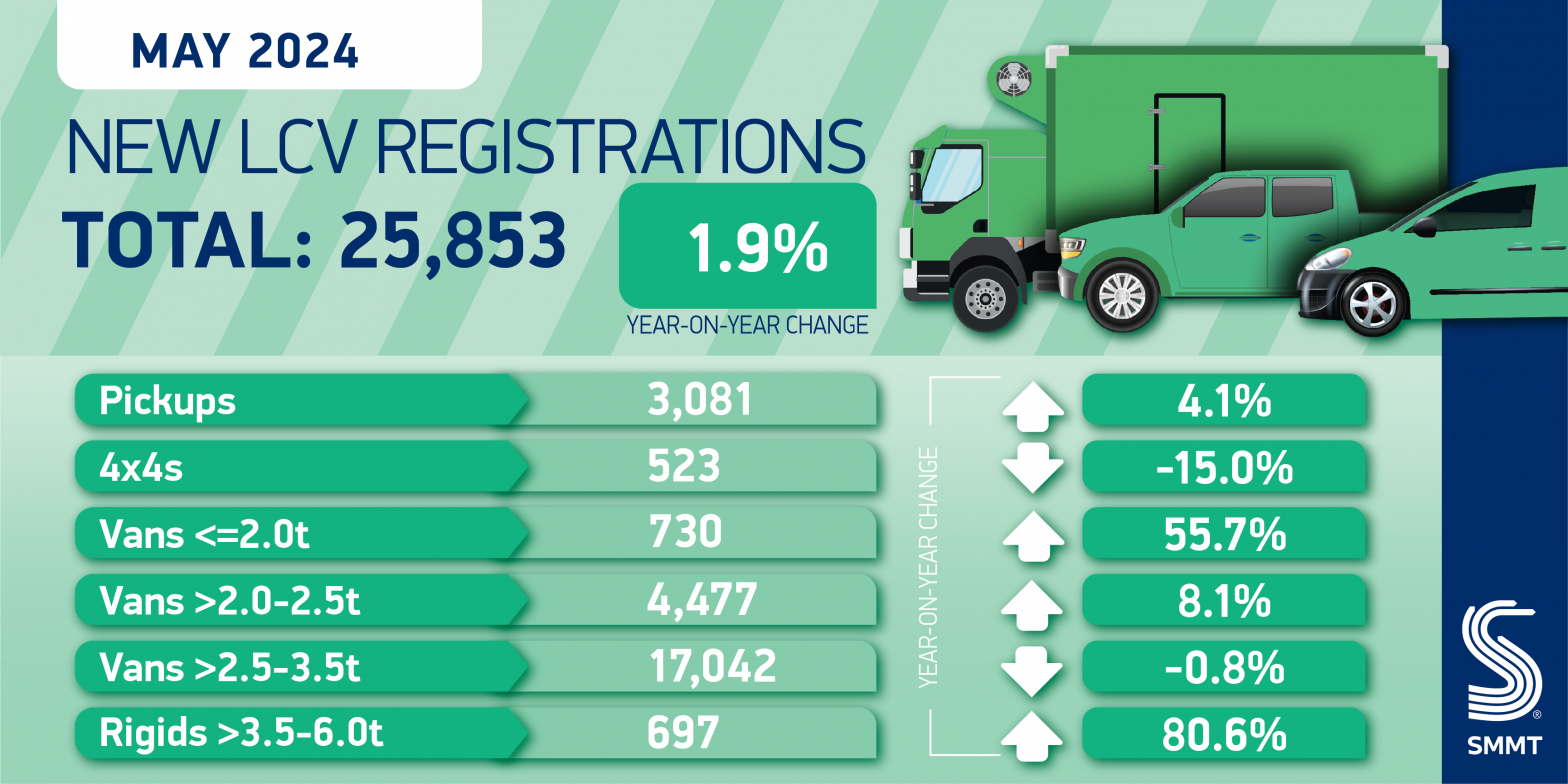- 17th month of growth in LCV market as volumes rise 1.9%.
- Growth fuelled by midweight vans as market records best May since record-breaking 2021.
- Battery electric vehicle uptake rises but market still short of targets.
SEE LCV REGISTRATIONS BY BRAND
DOWNLOAD PRESS RELEASE AND DATA TABLE

The UK new light commercial vehicle market posted its 17th consecutive month of growth in May, as registrations rose by 1.9% to reach 25,853 units, according to new figures from the Society of Motor Manufacturers and Traders (SMMT).
The result was the strongest performance for the month since 2021, which recorded the best May market in history when business investment in commercial vehicles accelerated in the wake of the pandemic.1

Volume growth was fuelled mainly by an 8.1% increase in uptake of vans weighing more than 2.0t up to 2.5t. Light vans weighing less than 2.0t recorded the largest proportional growth, of 55.7%, although the market segment is subject to volatility arising from low volumes. The 4×4 market, subject to the same small volume variations, recorded a decline of -15.0%, while pick-ups grew by 4.1%. As ever, large vans weighing more than 2.5t up to 3.5t comprised the vast majority of the market (65.9%), with a slight decline of -0.8%.

The overall market continues to be positive, with registrations for all vehicle segments up in the year to date, and the transition to zero emission vehicle is also keeping up – but not at the pace required to meet mandated Vehicle Emission Trading Scheme targets. Battery electric van (BEV) rose 3.5% in May to achieve a 4.2% market share – almost unchanged from last year’s 4.1%. In addition, overall BEV uptake year to date has fallen -2.1%, delivering a 4.8% market share, down from 5.2%. The Vehicle Emissions Trading Scheme target for each individual brand is 10% this year.

Harnessing the sustained growth in LCV demand but converting more operators to go electric will be crucial to the delivery of net zero. With a choice of more than 25 zero emission models now available to suit a variety of use cases and compelling offers available, manufacturers are making massive investments in this transition. With Britain heading to the ballot box next month, however, all parties must plan to put in place measures to help UK businesses go zero emission, by sustaining existing fiscal incentives for electric and hydrogen vans, and ensuring the provision of van-specific charging infrastructure.

Mike Hawes, SMMT Chief Executive, said,
The UK van market’s 17-month run of growth is playing a crucial part in renewing the fleet with the latest, cleanest vehicles. However, convincing businesses that now is the time to switch to zero emission operations remains a challenge. With an expanding choice for every use case now available, the next government must take steps to recharge the zero emission van market, an essential part of the net zero economy every party wants.

Notes to Editors
1 May 2021: 29,354
